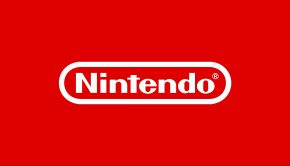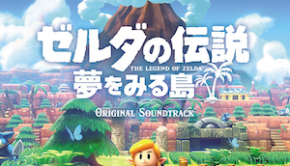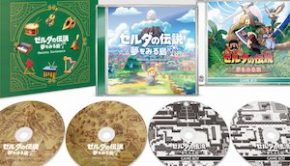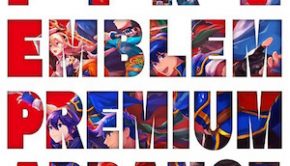Mario Kart 8 Original Soundtrack
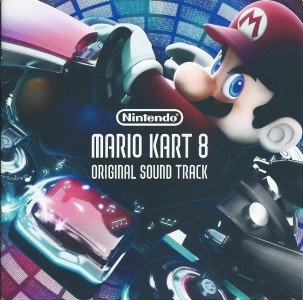 |
Album Title: Mario Kart 8 Original Soundtrack |
| Record Label: Nintendo |
|
| Catalog No.: N/A |
|
| Release Date: June 2015 |
|
| Purchase: Buy Used Copy |
Overview
Mario Kart 8 can best be described as an unexpected surprise. That may seem like an odd statement, considering that the Mario Kart spinoff games are a tent-pole franchise for Nintendo, and yet Mario Kart 8 is the Wii U’s bestselling game, blooming with a gorgeous art-style, some spectacular effects, and, most importantly, an overabundance of creative fun, making this kart-racer the most exciting entry in the series. However, something that captivated fans, including myself, right from the get-go with 8 was its music and sound design. Like Super Mario 3D World, Mario Kart 8 features live instrumental performances mostly done in a big-band jazz sound, which features Nintendo composers and arrangers Yasuaki Iwata, Shiho Fujii, Atsuko Asahi, Ryo Nagamatsu, Satomi Terui, Asuka Ohta, and Kenta Nagata, alongside over 20 live performers. In-game, everything is perfectly synced to the speed, rhythm and settings of the race, making this soundtrack one of Nintendo’s most lively and kinetic. Thankfully Nintendo has at least released 8’s music on a limited 2 disk soundtrack set, available exclusively to Club Nintendo of Japan and Europe members.
Body
The soundtrack set is neatly split in half, with the first disc being solely dedicated to the original and retro courses originally included on the game’s release. The second disc on the other hand covers the DLC courses, and later switches gears to the menu themes and incidental music of the game. It should be noted that Mario Kart 8 is the first in the series to not include any repeated track songs, and also includes new arrangements of classic songs and main themes in the series, making this the most complete soundtrack release for Mario Kart as a whole. This can be best encapsulated with 8’s title screen theme, “Mario Kart 8,” composed by Atsuko Asahi and featuring some brilliant interplay between electric guitars, high-energy trumpets and saxes, and a bassy rhythm that evokes the overall feel of Mario Kart. The first time I heard the theme, I actually got overjoyed to start playing, and that’s before the song transitions into its second half, a big band arrangement of Super Mario Kart’s main theme, which has been re-arranged since Mario Kart 64, but hasn’t returned to its original chord progression until now. It’s a great jazz piece in itself though on the release it actually plays during the soundtrack’s last fourth on the second disc, a rather odd choice if you ask me.
The soundtrack’s first disc starts out with what can actually be identified as the main theme of 8, “Mario Kart Stadium,” a triumphant piece that excitedly foretells the way some of the courses’ music plays out generally. Arranged by Yasuaki Iwata, who employs an active brass section, backed up by bass and electric guitars and drums, the piece moves smoothly from one statement of its melody to another, which is occasionally delegated to MIDI strings. This melody is repeated in Shiho Fuji’s arrangement of “Mario Circuit,” featuring a more relaxed style, and an almost retro-sounding bass riff. The trumpets come in explosively at the end of each measure, complementing the synthetic electronic melody, which is played up to represent Mario Kart 8’s main feature: anti-gravity races. An additional, and very happy sounding saxophone solo completes the loop, and breathes a fresh air into the melody. Fortunately, or unfortunately depending on how you look at it, these tracks are the only real themes to be developed or expanded upon during the soundtrack’s runtime.
Moving on to some more original songs on the soundtrack, “Sweet Sweet Canyon” is an innocently endearing French-accentuated track, featuring a synth-accordion and a live violin solo, which comes across quite well in the final mix. “Toad Harbor,” on the other hand, is also just as endearing, but is comparatively more relaxed, being an electric and acoustic guitar piece that captures the seaside town vibe vividly. Speaking of vivid images, “Bone Dry-Dunes” does the desert atmosphere well. Thankfully the synth percussion instruments come across believably enough, while pushing its live violin solo to the foremost channels on the mix, which really sells the “Saharan desert” imagery Mario Kart frequently employs. “Sunshine Airport” also employs a violin, along with guitars which are unfortunately every so often concealed by the electronics mixing, though the end result is still satisfyingly energetic and laid back simultaneously. On the polar opposite of the musical spectrum, stands “Bowser’s Castle,” an imposing electric guitar piece that’s supported by the entire big band ensemble. It functions near identically to “Bowser’s Highway Showdown,” from Super Mario 3D World, but with more oomph to its guitar, making it work perfectly for the dizzying Bowser’s Castle course in game. “Rainbow Road,” another Kart staple, is a bit more conservatively done compared to other arrangements in the series, but it still has that charm that has consistently propelled Mario Kart, and manages to contain a solid guitar solo that complements the track well.
With the release of DLC courses we also have quite a few new original compositions, starting with the Far-East inspired “Dragon Driftway” which incorporates an erhu to its funky rhythm and electric guitar performance. Though not my favorite track by any means, I can’t help but admire the Atsuko Asahi’s attempt of doing something completely new and yet fitting for the course’s imagery. Next, we have “Ice Ice Outpost,” a lovely violin based track, that while short, swirls around with gleeful imagery and is a memorable addition to this lineup. “Wild Woods” is also an interesting and completely different track, not only being the single track to use an oboe and what sounds like a sampled children’s choir, but also being Mario Kart’s first song in a 5/4 time signature. It’s delightful and does it best to capture a mysterious yet innocent sound.
However, where Mario Kart 8’s original tracks truly shine is with the usage of live dynamic tracks. Nintendo has experimented with adding along different beats, chords, and even whole instruments depending on what’s happening in a given game, but never to the same speed or precision as in Mario Kart 8. “Water Park,” while a standard “beach-themed” course, has a pleasantly surprising big-band performance that mimics a Latin festival tune flawlessly, being excitable and joyous all the same. Partway through, the track shifts and becomes an underwater version, being more synth based and losing the majority of its live elements, a technique Nintendo has used in most of its water levels within the modern Mario series. “Electrodrome” plays off this same technique, being the first “dance/rave” music in the series, layering different effects and beats depending on the location on the track, including a sliding synth effect and some vocal sounds from partygoers on the race track. “Shy Guy Falls” works similarly, blending a live performance featuring guitars and violins, in a strange but effective combination of western music and mountainous Andean rhythms, capping off with a layering of Shy Guy vocal effects being played along with the rhythm. Its playful, if a little on the basic side. Mario Galaxy fans will get a kick out of “Cloudtop Cruise,” which transforms part way through to a synth-orchestra and acoustic guitar accompanied performance of the infamous “Gusty Garden Galaxy” theme. The track also employs a real time shift to a heavy electric guitar performance of the theme, which is impressive on its own, but really necessitates more percussion besides the single synth pulse that’s used.
Three original tracks really stand out in terms of originality and dynamism. The first is, “Dolphin Shoals,” a three-part track that changes depending on where you are on the course, which, on the soundtrack, is presented on two different tracks. The first of which, “Dolphin Shoals – In the Sea ~ Undersea,” begins with the basic theme and rhythm played on an acoustic guitar, before shifting to a mysterious sounding underwater version, akin to “Water Park’s” shift. The true highlight comes in the third shift, presented on “Dolphin Shoals – Above Ground,” a fantastic live band piece, with a dynamic and rollicking saxophone solo at the forefront. It’s simply one of the best pieces in all of Mario Kart, capturing the energy and fun of the typical “beach” level and transforming it into something unique and memorable. “Super Bell Subway,” is another DLC course that continues the soundtrack’s usage of intelligent dynamic live tracks. Atsuko Asahi’s work shines here, vaguely resembling some of her compositions in Animal Crossing, complete with trombones at center stage and a very French-inspired accordion performance. It’s a vibrant track, but what really stands out about is its musical transition. Named on the soundtrack as “Super Bell Subway (Underground),” this extra layer segues in on a specific portion of the course, aptly an underground Subway system, which incorporates an aggressive bass performance of the Super Mario Bros. Underground theme. Not only does the theme mesh surprisingly well with “Super Bell Subway’s” melody, it is also completely appropriate given its setting and equally enjoyable.
Surprisingly, these even pale in comparison to Ryo Nagamatsu’s “Mount Wario,” another big-band number, which is played out as one singular piece of music that actually transitions according to the setting within the game’s course. We start out on the summit of the mountain, with the basic melody played out on the violin and brass instruments, further accompanied by electric guitars and piano. The brass takes over as we dive into a darkened cave, changing the music into a slightly deeper, slightly more complicated manner. Trumpets explode as we come out of a water reserve building, and as we turn sideways (thanks to antigravity), the music builds excitedly and somewhat triumphantly. We land on a snowy hill, with the drum rhythms changing slightly, and piano chords playing in the background. A fantastic violin duet erupts as we cross a small forest, rhythm section still leading the way. The melody returns in full once again as we enter the final section of the race: a downhill ski course. Saxophones and electric guitar play out, with the rest of the brass announcing the exciting and thrilling conclusion of the race. While short on the soundtrack, it’s simply one of the best tracks in the game and a true highlight of the whole Mario Kart series!
Long running fans of the series will also be delighted at how many classic tracks from Mario Kart have been updated for this release. However, in contrast to the original compositions, these arrangements tend to be more on the conservative side, with less usage of the band. Tracks such as “DS Cheep Cheep Beach,” “N64 Toad’s Turnpike,” “GCN Sherbet Land,” and “3DS Piranha Plant Slide,” have been rearranged and definitely sound better than their original counterparts, but nothing too noteworthy has been added to these songs. “Wii Grumble Volcano” has had barely any changes to its original composition, along with the somewhat annoying sounding “3DS DK Jungle,” an arrangement of the oft-covered Donkey Kong Country theme, which sounds exactly the same as the 3DS version. With the DLC tracks, “Wii Wario’s Gold Mine” and “3DS Neo Bowser City” in particular get no real additional arrangements or live instrumentation, and while they sound better to their original versions, the difference between these and the higher quality tracks is notable. A few tracks also employ dynamic music, “3DS Music Park,” in particular features bouncing-notes sound effects and the sliding sounds of a piano and xylophones, which are triggered in real time in-game, but represent a missed opportunity of not incorporating actual live tracks. The original version of Rainbow Road also gets a rearrangement with “SNES Rainbow Road” pushing forward the more triumphal aspects of the track, while downplaying the mystery and the unique sound of the original. It works very well in its new HD context, despite not using live instruments.
When the composers do pair up live music to some of these classic tracks, we do strike some compositional gold, and some great highlights. “SNES Donut Plains,” while featuring its melody on synths, uses a live bass and acoustic guitar performance that happily melds the nostalgia of the original Super Mario Kart to a refined, almost Brazilian carnival-like performance. “N64 Yoshi Valley” while using only drums and violins, captures the cartoony Mario world with rambunctious and fun Western-influenced energy. Speaking of, “Moo Moo Meadows” clearly displays its Western influences even more so now, using a violin and acoustic guitar combo in a fun and loving way. “GBA Mario Circuit” on the other hand gives the short Gameboy Advance theme a breath of fresh jazz air by employing the whole brass section and manages to make the melody sound almost completely different to its original. “N64 Royal Raceway,” the funky main course track from Mario Kart 64, is also similarly updated with live drums, bass, and brass, with extra emphasis given to a synth organ, giving the nostalgic track a glamourous feel. “GCN Yoshi’s Circuit,” the main course theme from Mario Kart: Double Dash!!, is similarly remade into a jazz piece, while keeping a lot of the elements that made the track memorable, including a background whistle.
Weirdly enough, “GCN Baby Park” gets a live band treatment despite the fact that it’s a short looping track, that quite frankly, gets very repetitive. The extra loop that’s added on the soundtrack itself is also quite unnecessary as well. Two more Gameboy Advance tracks get very different arrangements, first with the already jazzy “GBA Cheese Land.” While the track plays up the jazz aspects of the song, thanks to a saxophone taking over the melody, some of the effects of the original version of the track are still present, including some mice sound effects and an overall retro beat. Lastly, “GBA Ribbon Road” is completely changed up and sounds almost nothing like its original version, save portion of its melody (now sped up) and some chords here and there. Instead, it’s been remade into a 70s inspired bass guitar jam session, which still fits well in-game.. However, the biggest highlight of these revamped themes has to be the infamous “N64 Rainbow Road,” which is given a triumphant orchestral arrangement complete with the full big band line up. It’s an absolutely nostalgic track that sounds better than ever before and is likely to bring tears to some longtime player’s eyes. On a side note, this track’s arranger, Ryo Nagamatsu, who also arranged the aforementioned “Mount Wario,” and the entirety of The Legend of Zelda: A Link Between Worlds Soundtrack is quickly becoming one of my favorite mainstay Nintendo composers.
Perhaps the biggest surprise to grace Mario Kart 8, both in-game and in the soundtrack, is the appearance of guest characters and courses from other Nintendo series, meaning arrangements of some classic Nintendo tunes. “Excitebike Arena” is a retro infused love letter to Excitebike, layering the opening chiptune melody with backing guitar performances. It’s certainly not the best track, but it’s enjoyable nonetheless. Next up, The Legend of Zelda gets its own big-band arrangement with “Hyrule Circuit,” a spectacular piece that incorporates “The Legend of Zelda Main Theme,” “Zelda’s Lullaby,” and a short segment of Ocarina of Time’s “Hyrule Field.” While it goes by way too quickly, the track is undeniably geared towards Zelda fans, and makes great usage of the big band by keeping the trumpet front and center, and having short violin and electric guitar solos.
Animal Crossing also gets a ton of love and respect in no less than four tracks. While essentially variations on the same motif, composer Atsuko Asahi does a fantastic job separating them out and capturing what makes Animal Crossing so memorable within a jazz context. Each track begins with a short statement of the main theme from Animal Crossing: New Leaf before diverging in fun and unique ways. “Animal Crossing: Spring” features a sweetly played flute and trombone, while changing during its second half to the main theme of the original Animal Crossing. “Animal Crossing: Summer,” on the other hand extends the New Leaf theme via a Western-swing styled acoustic guitar and violin duet, while “Animal Crossing: Fall” utilizes the nostalgic main theme from Animal Crossing: Wild World with a very laid back accordion based lead. Lastly, “Animal Crossing: Winter” features a very Holiday inspired take that combines both the Christmas Eve music and 7 PM music from New Leaf. It’s all in all a very great take on the music from this lovable series, and almost makes me wish for more live performances of Animal Crossing’s delightful soundtracks.
In the end however, it’s F-Zero that absolutely steals the show with two incredible tracks. Unsurprisingly, Ryo Nagamatsu delivers perhaps the definitive cover of “Mute City,” the oft-remixed theme from the series. The dizzying song works increasingly well as an electric guitar and saxophone duet, with both instruments alternating over the melody throughout the first half of the song, and then having a simultaneous jam breakdown during the second half. The background orchestral synths and drums also add a much needed dramatic layering as well. However, Kenta Nagata’s take on “Big Blue,” is just plain jaw-dropping. Following “Mute City’s” instrumentation, the track features an electric guitar and saxophone as the lead instruments, but it changes with different sections meant to be synched up to the track. The track goes through several variations, concluding on some fantastic solos, while never losing its edge and caliber in terms of its performances. “Big Blue” is yet another highlight for Mario Kart 8.
The final leg of the soundtrack is mostly a collection of menu songs and fanfares that show up throughout the course of the game. There’s really not all that much to talk about, and while songs like “Spectating” or “Mario Kart TV” are serviceable in-game, they’re all too short to leave any real impression. Of note is “Selecting,” a track that builds depending on what options the player has selected before a race begins. Its short and essentially the same as “Main Menu” from Mario Kart Wii, but somewhat less impressive. “Selecting (Online)” is the only track that is mostly just ambience, building ever so softly. Although, again, not too noteworthy, it provides a much needed break in such a bustling soundtrack. The “Results A” and “Results B” music are also similarly serviceable but forgettable, although of note are the extra results themes that go along with some of DLC courses. “F-ZERO Results” is a remix of the original ending theme from F-Zero, while “Animal Crossing Results” is a quick take on the Coffee Shop theme from Wild World. While not exactly necessary to the experience, these remixes are welcome additions to the soundtrack. Lastly, “Course Intro Fanfare,” “Summaries,” “Congratulations!” and “Good Try!,” are all incidental music before and after a grand prix, and all use a synth orchestra that sounds great and triumphant but is unfortunately not developed nearly enough. Finally, Ryo Nagamatsu returns to conclude Mario Kart 8 with “Staff Roll,” a fantastic medley completely arranged for the big-band that is one the best pieces on the album and makes for a satisfying ending. Combining “Mario Kart 8,” “Mario Kart Stadium,” and including brief snippets of “Electrodrome,” “Thwomp Ruins,” “Mount Wario,” and finally the original Super Mario Kart theme, makes for a rousing finish, especially with the spectacular performance from the jazz ensemble.
Summary
Mario Kart 8 is an excessively energetic and fun soundtrack that uses the big band jazz ensemble to its fullest while never once forgetting its roots, and always paying homage to the games that came before it. Though it may be a lot of music and energy to take on in one single sitting, fans of the game will most likely know these beats and melodies by heart, thanks to the brilliant in-game usage, proving that Nintendo’s composers know how to mesh live music to game design. However, the worst part of this soundtrack release is the fact that, as it currently exists, it is only a collector’s item. Nintendo has in the past stubbornly refused to release its music to other territories, either via digital download or through stores, although that may be changing soon. With the recent announcement of THE 30TH ANNIVERSARY SUPER MARIO BROS. MUSIC soundtrack release and even a physical release of Splatoon’s music, perhaps we’ll see Mario Kart 8’s music hit store shelves. It’s simply one of the best albums to come out of Nintendo and absolutely deserves a wider audience.
Do you agree with the review and score? Let us know in the comments below!
4.5
Posted on August 28, 2015 by Julius Acero. Last modified on September 5, 2015.

